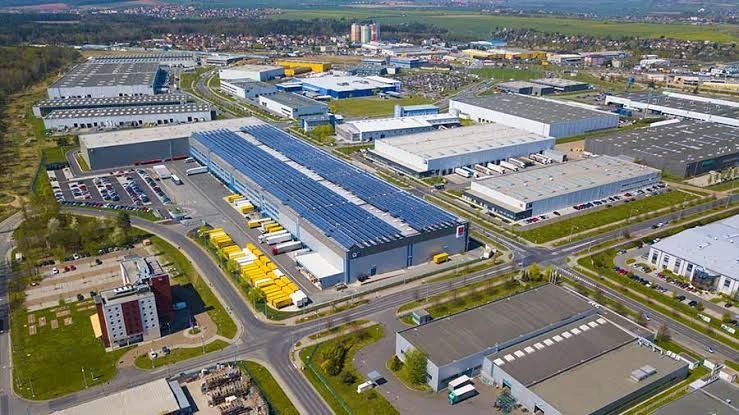India is on the brink of an industrial transformation. The question is whether ambition will translate into global competitiveness or whether structural bottlenecks will keep the country on the sidelines. The manufacturing sector is at a pivotal juncture, poised between immense potential and persistent constraints that have historically limited India’s ability to compete internationally. Despite ambitious reforms, infrastructure investments, and initiatives such as Make in India, manufacturers continue to confront slow land aggregation, inconsistent utilities, fragmented logistics, and complex regulatory frameworks. These challenges extend beyond domestic frustration and shape global investors’ perceptions of India’s industrial ecosystem. The government’s push for plug-and-play industrial parks seeks to address these inefficiencies, but success is far from guaranteed.
Plug-and-play industrial parks are a strategic departure from conventional industrial zones. They provide pre-approved land, ready-to-use utilities, and integrated logistics, enabling manufacturers to move from investment decision to operational readiness in months rather than years. By reducing setup time, lowering upfront capital requirements, and mitigating regulatory risk, these parks promise productivity gains and improved integration into global supply chains. A Cushman and Wakefield survey reports that eighty-eight percent of Indian manufacturers are expanding operations due to enhanced confidence in infrastructure support, while more than ninety-five percent cite improved logistics access as a decisive factor. Infrastructure certainty has become a key determinant of industrial growth and investor confidence.
The government’s financial commitment reinforces the importance of this model. The Union Budget 2025-26 allocated ₹2,500 crore to develop twelve sector-specific parks, targeting high-value clusters in electronics, automotive components, pharmaceuticals, and renewable energy equipment. This investment aims to accelerate plant setups, attract foreign direct investment, generate employment, and foster sector-specific clustering. Yet investment alone is not sufficient. The operational success of these parks depends on governance, workforce readiness, technological integration, and environmental planning. Ambition must be matched by execution.
Global experience illustrates both the promise and the pitfalls of this approach. Singapore’s Jurong Industrial Estate exemplifies successful execution, where fully serviced land, streamlined approvals, and integrated infrastructure created a hub for global advanced manufacturing. By contrast, several industrial parks in sub-Saharan Africa, despite significant investment, failed to meet expectations due to fragmented governance, weak skill development, and poor transport linkages. These examples demonstrate that physical infrastructure alone does not guarantee success; execution, policy consistency, and human capital are equally critical.
Integrated logistics remain a decisive factor. Without seamless connectivity to highways, railways, and ports, even the most well-designed parks can fail to achieve scale or global relevance. Efficient transport networks are essential to minimize costs, ensure timely production, and maintain competitiveness. India’s plans must synchronize industrial park development with broader transport infrastructure expansion to maximize impact.
Workforce readiness is equally important. Plug-and-play parks consolidate firms, presenting opportunities for localized, sector-specific skill development. India’s vocational and technical training programs, while significant, have gaps in alignment with industry requirements. Partnerships between industry, academia, and government are essential to ensure workers possess the skills needed for advanced manufacturing. Without addressing this, parks risk becoming operationally ready but skill-poor, limiting productivity and innovation.
Financing models play a critical role as well. Hybrid annuity structures and public-private partnerships help reduce upfront fiscal pressure, but innovative instruments such as green bonds, climate-linked funds, and international development finance can align capital with sustainability and efficiency goals. Investors require transparency, predictable policies, and robust regulatory oversight. Misaligned financing or unclear incentives could stall deployment, undermining the advantages these parks are intended to deliver.
The global stakes are substantial. Supply chains are shifting in response to geopolitical tension, trade policy changes, and industrial reshoring trends. India has a window to position itself as a reliable, high-quality manufacturing destination. Efficient, well-governed plug-and-play parks can provide a comparative advantage that attracts investment away from traditional hubs in China, Southeast Asia, or Eastern Europe. Missing this window due to execution lapses could leave India constrained by historical inefficiencies.
Challenges are as significant as opportunities. Land acquisition delays, local resistance, uneven policy application across states, and skill gaps could limit the parks’ impact. Overestimating operational speed or underestimating the complexity of coordinating multiple stakeholders may result in underutilized facilities or stalled projects. Yet if India succeeds, the payoff is substantial: accelerated industrialization, higher foreign investment, integrated global supply chains, and a model for sustainable, technology-enabled manufacturing.
Ultimately, plug-and-play industrial parks are more than infrastructure projects; they are instruments of strategic economic planning. Their success depends on synchronizing physical infrastructure, logistics, workforce development, sustainability, and financing. They represent India’s opportunity to overcome persistent structural challenges, attract global investment, enhance competitiveness, and provide meaningful employment. The question is urgent and consequential: Can India leverage these parks to fully realize its manufacturing potential while meeting global standards of sustainability, efficiency, and inclusivity
The answer will shape India’s industrial trajectory and its position in the global economic order. Effective implementation will demonstrate that India can combine ambition with execution, scale with sustainability, and policy with performance. Conversely, failure would expose persistent structural and governance challenges that have historically constrained India’s industrial transformation.
India’s manufacturing future depends on the effective deployment of these parks. By consolidating gains from decades of reform, demonstrating governance competence, and integrating domestic industry into global value chains, plug-and-play parks can become the engine that drives higher growth, global competitiveness, and sustainable industrialization. The world is watching, and India’s ability to deliver will define whether it emerges as a global manufacturing leader or remains constrained by structural inefficiencies. As these parks take shape, one question remains for readers and policymakers alike: will India seize this moment to set new global standards in manufacturing or will ambition remain trapped by execution?
